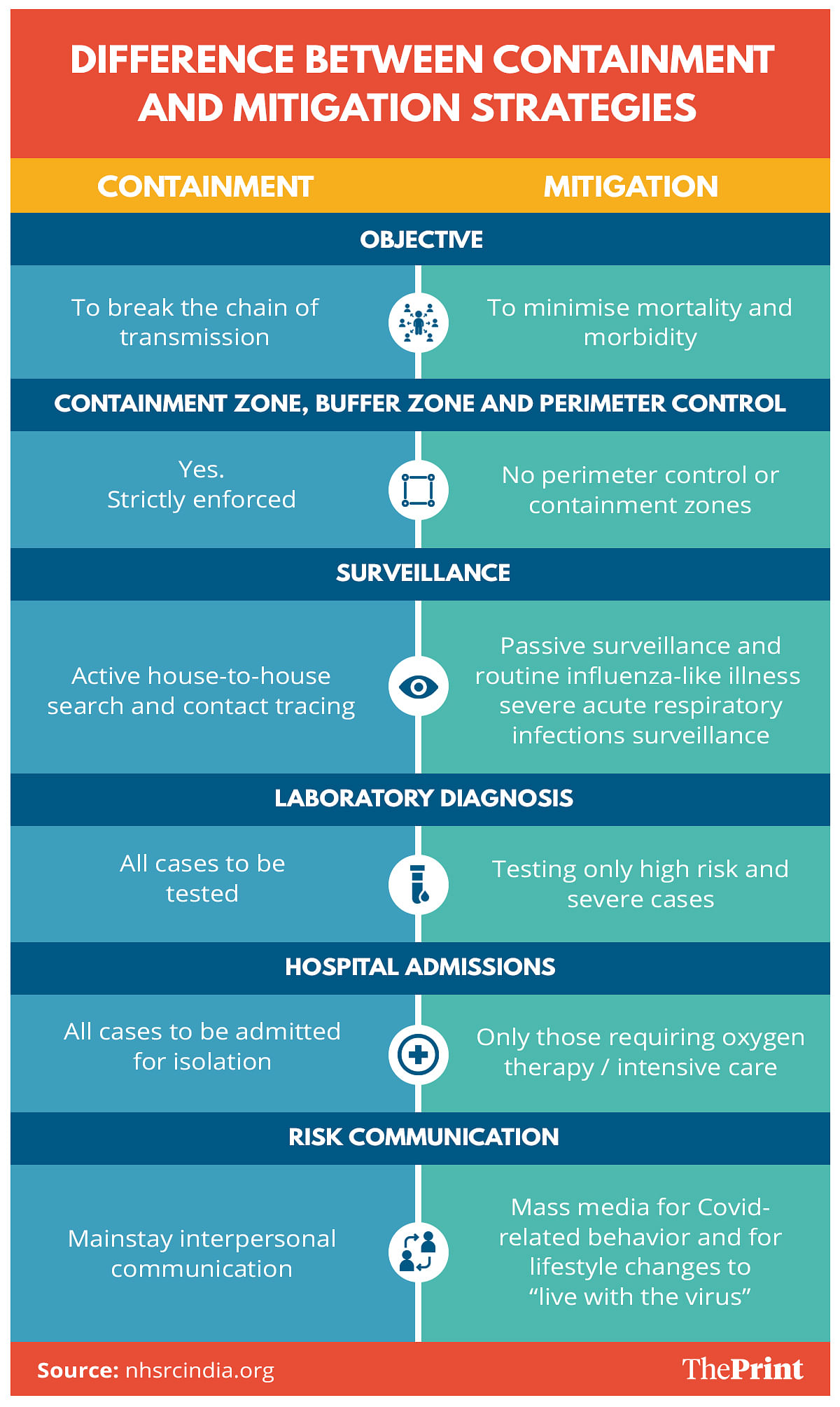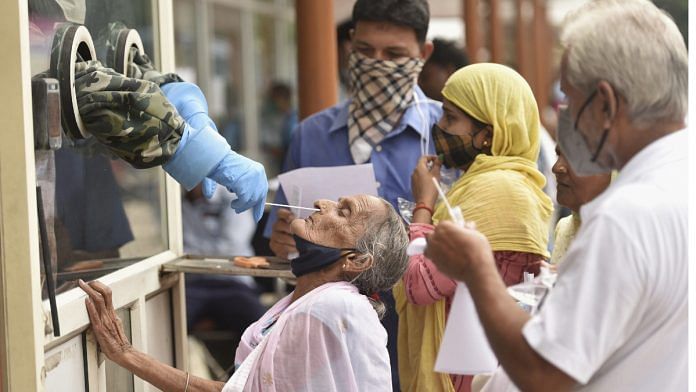New Delhi: With the Indian government finally conceding that Covid is in the community transmission stage, experts are emphasising the need to shift the country’s pandemic strategy from “containing” the spread of infection to reducing morbidity or mortality.
The Indian SARS-CoV-2 Genomics Consortium (INSACOG), a government body that operates under the Union Ministry of Health and Family Welfare, said in its 10 January bulletin, released Sunday, that “Omicron is now in community transmission in India and has become dominant in multiple metros, where new cases have been rising exponentially”. INSACOG reports genomic surveillance data about Covid-19 across the country.
Experts have spoken about the prevalence of community transmission in India since nearly the beginning of the pandemic, but this is the first time that the government has officially taken this stand.
Dr Anand Krishnan, professor of community medicine at the All India Institute of Medical Sciences (AIIMS), New Delhi, told ThePrint that this bulletin should set off a paradigm shift in how the pandemic is being handled in India.
“In the current context, containment and test-track-treat do not make sense any more. Testing should be done now only when it is needed for management purposes. At a later stage, local outbreaks may be investigated but right now the assumption would be that any person with symptoms is positive. If people are symptomatic, they can just isolate for a week,” Krishnan said.
According to him, the positivity rate and number of cases are “meaningless statistics” at the moment, given the spread and numbers of the infection.
However, Krishnan added, while the testing strategy is moving in the right direction, it “may not be a good idea not to test patients coming into hospitals”.
Earlier this month, the Indian Council of Medical Research (ICMR) had suggested in new testing guidelines that Covid testing for all hospital patients need not be mandatory. “That is for a later stage,” Krishnan said.
Community transmission refers to a situation when the trajectory of an infection, or the chains of transmission, cannot be definitively traced in most cases. In India, the contact history of one of the first known Omicron cases failed to identify the source of infection.
ThePrint contacted the Ministry of Health and NITI Aayog over calls and WhatsApp texts asking about a change in pandemic control strategy in view of INSACOG’s assessment that there is community transmission.
Also Read: Omicron could replace other Covid variants, survive as common cold: Harvard immunologist Pillai
What experts have said on community transmission
In May 2020, prominent public and community health experts said in a joint statement that community transmission was “already well-established” across large sections of the population and that it was “unrealistic to expect that Covid-19 pandemic can be eliminated at this stage”.
This joint statement, which was issued by the Indian Public Health Association, Indian Association of Preventive and Social Medicine and Indian Association of Epidemiologists, further said that the “draconian” March 2020 lockdown had not curbed the spread of infection and that the government should have “consulted epidemiologists who had better grasp of disease transmission dynamics…”
ThePrint reached some of the signatories of that statement but they refused to come on record on the government’s new position on community transmission.
A change in strategy from containment to mitigation?
While the Government of India’s communication with states still includes both contact tracing and mitigation, the public health response plan drawn up early in the pandemic mentioned a “transition in strategy” from cluster containment to mitigation.
The then Union Health Minister Dr Harsh Vardhan had released the document, titled “Chasing the Virus: A Public Health Response to the Covid-19 Pandemic”, in March 2020.
While the purpose of containment is to break the chain of transmission, the purpose of mitigation is to reduce mortality and morbidity. Mitigation-based strategies do not include “containment zones” or perimeter control, and testing is only advised in high-risk and severe cases.

This approach also emphasises public health communications that focus on appropriate Covid-related behaviour and lifestyle changes to facilitate “living with the virus”.
Dr M.C. Mishra, former director of AIIMS, Delhi, speaking during ThePrint’s daily Covid show Virus Decode said wasting resources on testing and tracking is not advisable.
He also advocated doing away with Covid wards given the the reluctance of doctors to visit these; since community transmission is already so high, separate Covid wards are unnecessary, he suggested.
In British Columbia, Canada, new health recommendations suggested that it was acceptable for patients with and those without Covid but fully vaccinated to share a hospital room.
(Edited by Asavari Singh)
Also Read: Did your child test positive for Covid? Doctors say don’t worry, most kids recover in 3-4 days






